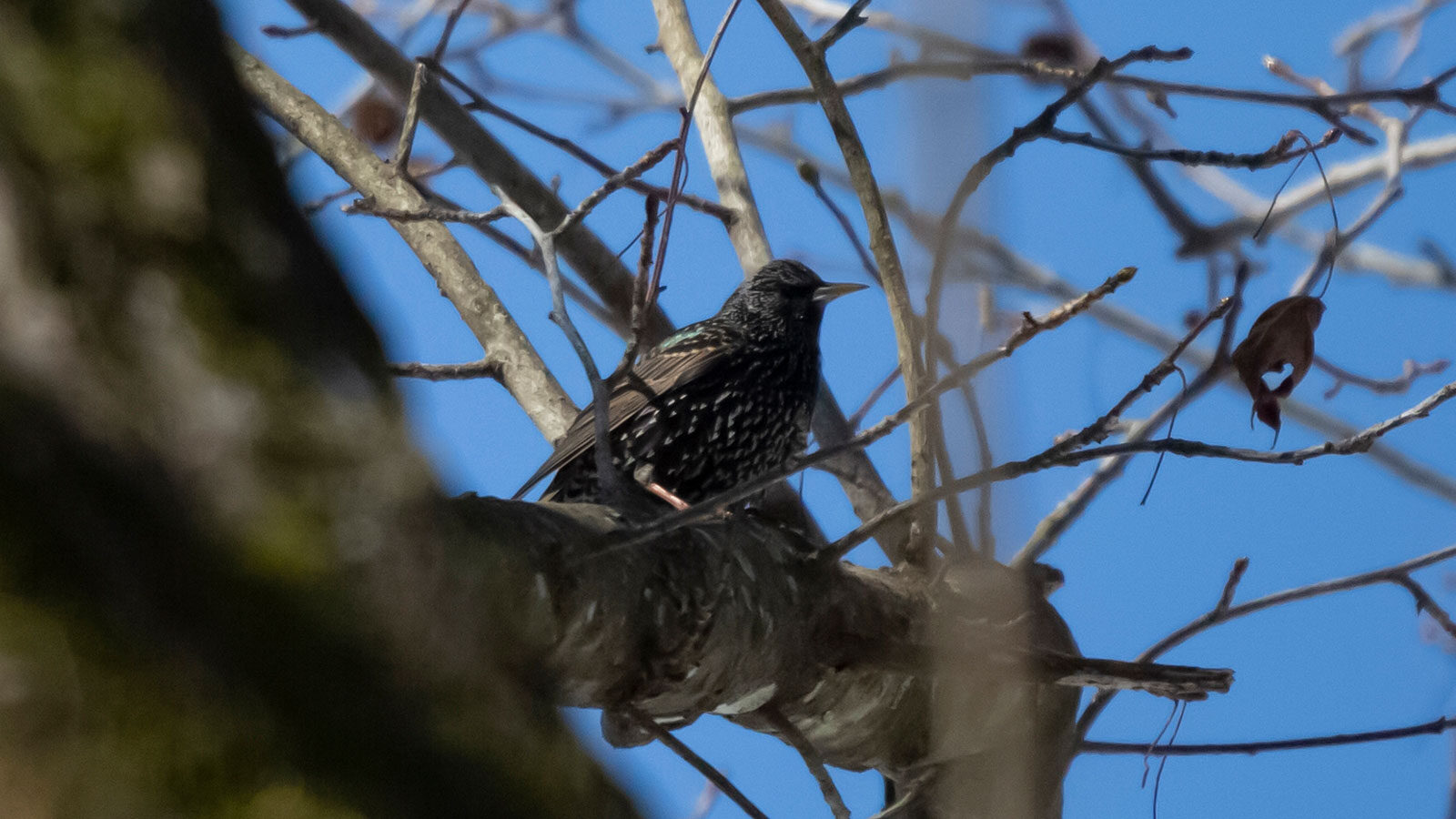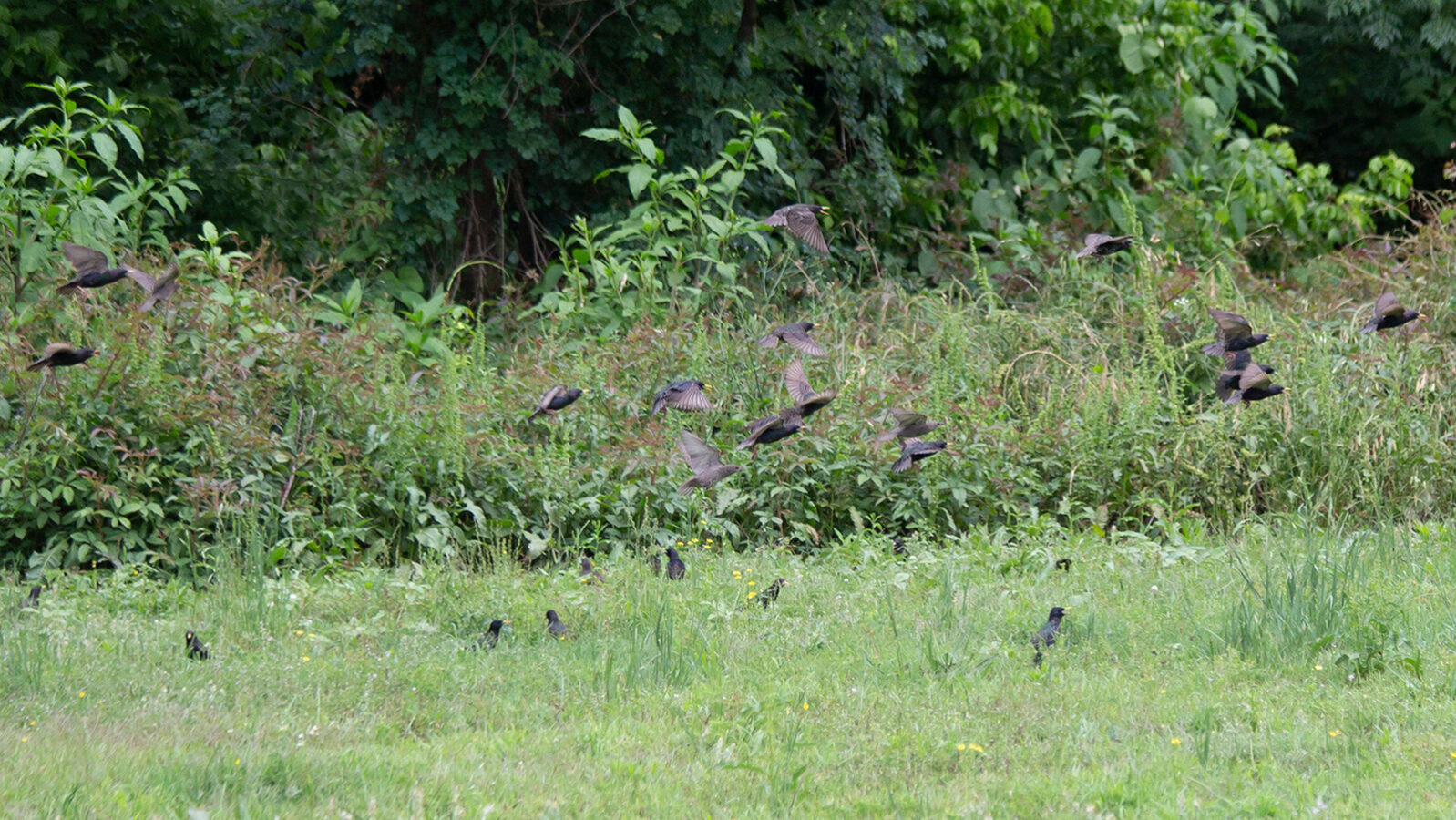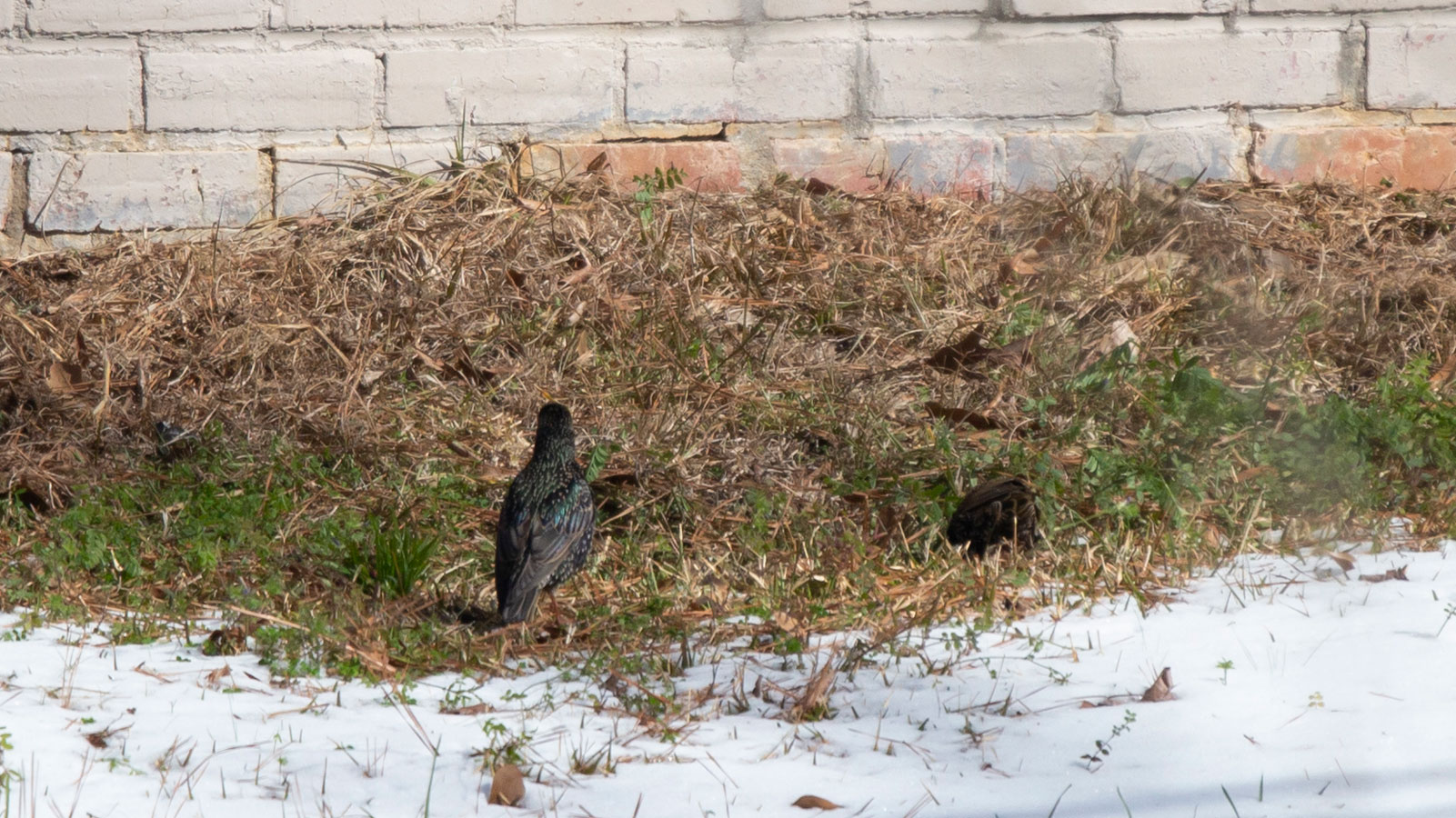
Did you know that common starlings can fly up to 48 miles per hour?
Common Starlings
at
a Glance
Key Features:
In winter common starlings are brown with white spots. In summer, they are iridescent greenish-purple. They look black at a distance.
Least Concern - Population Increasing
Habitat:
Fields, gardens, yards, forests, parks, and lawns
nesting habits:
Common starlings build cup-shaped nests on horizontal branches on the lower half of trees out of dead grass, twigs, moss, paper, feathers and roots.
seasons common starlings are active in our area:
All year
Diet:
Insects and fruit
hunting Behavior:
Common starlings forage on the ground.
Commonly Confused With:
Brewer's Blackbirds, Common Grackles, Red-Winged Blackbirds, and Rusty Blackbirds

Common starlings are often confused with Brewer’s blackbirds because both are black at a distance. Common starlings have yellow beaks. Brewer’s blackbirds have black beaks.

Common Starlings are often confused with common grackles because both have iridescent colors. Common starlings are smaller with shorter tails.
